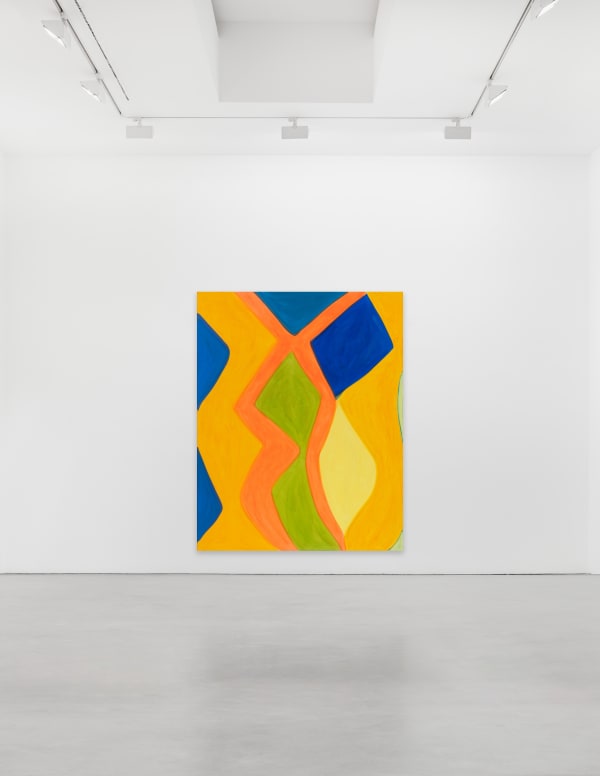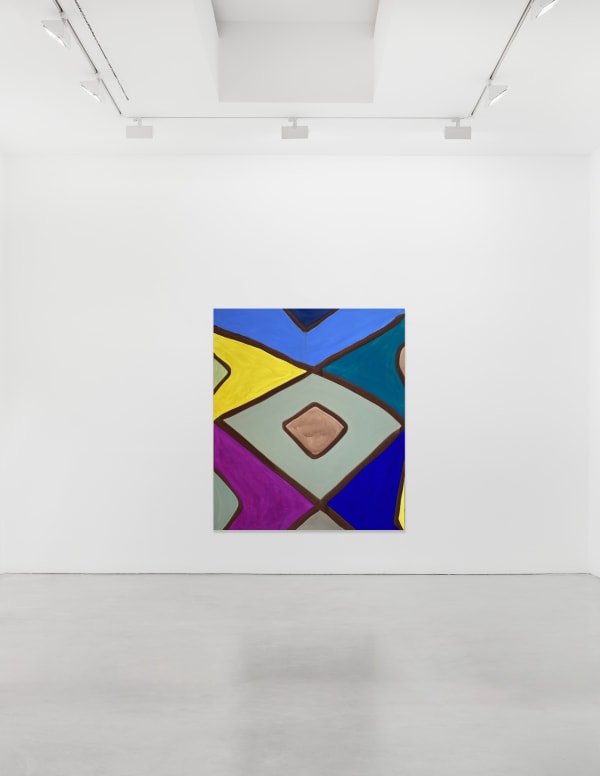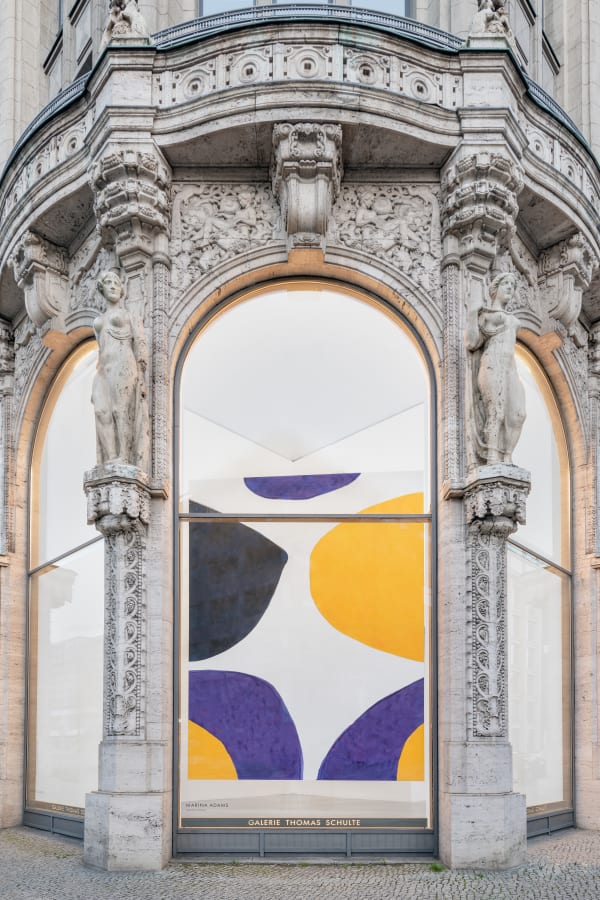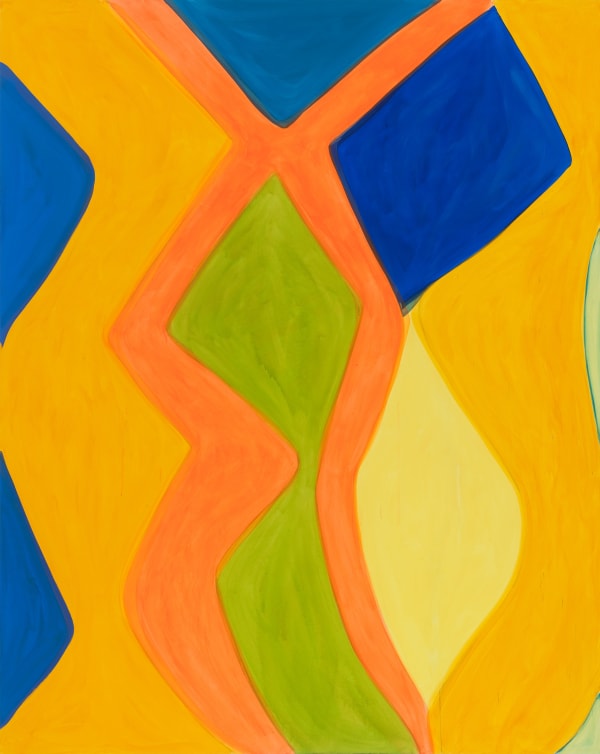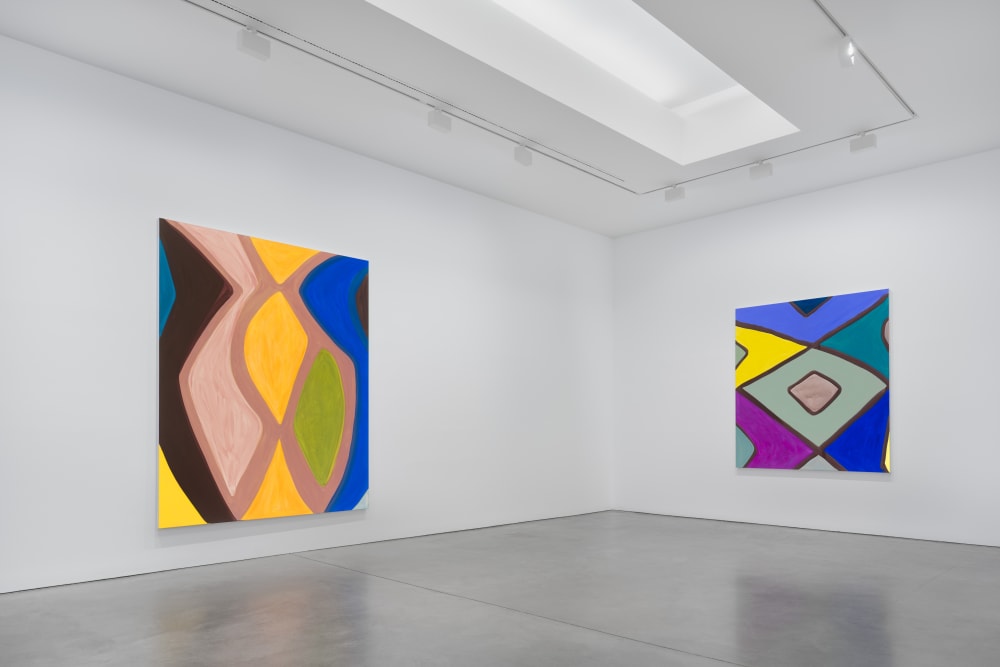MOTHER TONGUE: Marina Adams
-
介绍
Marina Adams’ loose composing of color and line opens up richly evocative constellations that are both alive with energetic fluctuations and pared down spaces of quiet reflection. During Gallery Weekend Berlin, Galerie Thomas Schulte presents Mother Tongue, an exhibition of Adams’ recent paintings, including a new large-scale canvas stretched across the gallery’s Corner Space. In this body of work, Adams expands on her bold painterly language that draws from nature, music, and poetry, among other sources, coalescing in a common ground that gradually unfolds.
Rather than a concrete form, what is shared among the works is an appearance of slow growth, or unfurling, conveyed by crisscrossing lines, repeated verticals and stacked shapes—reminiscent of links in a chain, accordion folds, rising columns, or even ancient symbols. Although vertical in orientation and movement, there is a horizontal tension that tugs at them, as though opening them up. A central, linear structure arranges electric color in loose geometries that attain new expressivity with each iteration. The lines do not so much separate color planes but tie them together into a whole that is completely at ease with its idiosyncrasies, irregularities, and nuances. Certain threads run through hinted at in the works’ titles, determined by Adams upon their completion. Here, we encounter references to the sea, to the female body, to music and art—from Nina Simone to Picasso.
We experience Adams’ work, its rhythms, as an ebb and flow—like bodies gently and continuously expanding and contracting with breath. In Where Water Meets Land (2022), more or less equal color planes are bordered by broad, dark-green intersecting lines. The delineated forms—a triangular base stacked with two quadrilaterals in the center, framed by three triangles on either side—suggest an aerial view of a rolling landscape. The composition is particularly angular, but not rigid: a slight convex movement gives a sloping appearance. And the horizontality suggested by the title is flipped, offering a different perspective on a familiar relationship. This is also paralleled in See-Line Woman 13 (2022), which makes reference to a seaport song by Nina Simone, the title and lyrics of which exist in a number of different iterations. The overall composition is similar, but its central lines, depending on how you look at it, appear doubled: converging the lines of the body with the line of the shore.
In Sea Song (2023), the central form resembles a kind of vessel: its base tapers slightly to a flat plane, while a widened, funnel-like opening stretches across the top. Its central colors are terracotta, sandy and golden—a warm glow pulses through. Its lines dip and swell breezily, as though shaped by wind touching sea. The otherwise languorous feel is jolted by a single field of green just to the right of the center.
There is a balance of opposing forces throughout, in works that are contemplative yet spontaneous, serene yet exhilarating, abstract yet bodily. This reaches greater intensity in the gallery’s Corner Space, where a single large-scale canvas, To Be Is Not To Be (2023), title taken from a Norma Cole poem, stretches across, like a sail. The central, organizing structure is more oblique; the distinction between line and color even more fluid. And the delineated forms all but lose their angularity. The colors that run through or swell over the edges are set in stark contrasts: between black and white and the complementary colors, yellow and purple. Its monumental size and presence emphasize a sculptural character that puts it in direct dialogue with the space: echoing its curvature through rounded forms and alternations between convex and concave with the movement of the canvas. Its central, branching form—in white—and the interplay of positive and negative space, serve to further extend it into the surroundings. In arrangements that intersect, overlap and open up forms within forms, like passageways, a particular sense of interconnectivity is channeled. It is not only an outward-stretching motion, but one that also moves inward: as they become vessels for the accumulated knowledge and experiences that inform both their making and their reception.
In Mother Tongue, the physicality of language is alluded to—from its embodiment to the movements and vibrations that form its sounds.But it goes beyond something fixed: resonances are carried through slow transformations, as Adams’ fluid, gestural forms take root and branch out. What we encounter is familiar, if loosely defined: at the edge of something, as though between waking and dreaming—on the tip of the tongue.
Text by Julianne Cordray
-
安装图示
-
SHOP EXHIBITION

-
作品
-
Inquire about works by Marina Adams

-
参展艺术家



